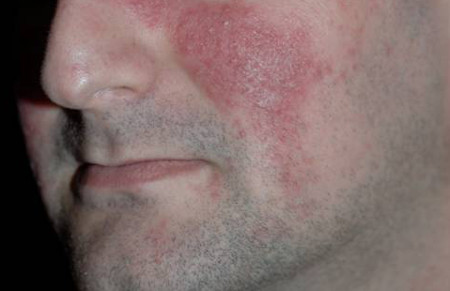Resumo
Definição
História e exame físico
Principais fatores diagnósticos
- presença de fatores de risco
- rubor
- eritema
- pápulas e pústulas
- telangiectasias
- manifestações oculares
- formação de placas
- distribuição na face
- mudanças fimatosas
Outros fatores diagnósticos
- acne vulgar
- queimação ou ardência
- aparência ressecada
- edema
- localização periférica
Fatores de risco
- Fototipos cutâneos I ou II da escala Fitzpatrick
- banhos/duchas quentes
- extremos de temperatura
- luz do sol
- estresse emocional
- bebidas quentes
- história familiar
- sexo feminino
- alimentos picantes
- bebidas alcoólicas
- medicamentos
Investigações diagnósticas
Primeiras investigações a serem solicitadas
- diagnóstico clínico
Investigações a serem consideradas
- biópsia de pele
- título de fator antinuclear
Algoritmo de tratamento
todos os pacientes
Colaboradores
Autores
Abel D. Jarell, MD

Dermatologist and Dermatopathologist
Northeast Dermatology Associates
Principal Investigator
ActivMed Research
Portsmouth
NH
Declarações
ADJ declares that he has no competing interests.
Agradecimentos
Dr Abel D. Jarell would like to gratefully acknowledge Dr Alexa Boer Kimball, a previous contributor to this topic.
Declarações
ABK has received honoraria for consulting from Intendis and has been an investigator for Intendis and Bayer.
Revisores
Jashin J. Wu, MD
Chief Dermatology Resident
University of California
Irvine
CA
Declarações
JJW declares that he has no competing interests.
Paradi Mirmirani, MD
Physician
Department of Dermatology
Kaiser Permanente Vallejo Medical Center
Vallejo
CA
Declarações
PM declares that she has no competing interests.
Brian L. Swick, MD
Assistant Clinical Professor of Dermatology and Pathology
University of Iowa
Iowa City
IA
Declarações
BLS declares that he has no competing interests.
Thierry Simonart, MD, PhD
Physician
Department of Dermatology
Erasme University Hospital
Brussels
Belgium
Declarações
TS declares that he has no competing interests.
Créditos aos pareceristas
Os tópicos do BMJ Best Practice são constantemente atualizados, seguindo os desenvolvimentos das evidências e das diretrizes. Os pareceristas aqui listados revisaram o conteúdo pelo menos uma vez durante a história do tópico.
Declarações
As afiliações e declarações dos pareceristas referem--se ao momento da revisão.
Referências
Principais artigos
Gallo RL, Granstein RD, Kang S, et al. Standard classification and pathophysiology of rosacea: the 2017 update by the National Rosacea Society Expert Committee. J Am Acad Dermatol. 2018 Jan;78(1):148-55. Resumo
Hampton PJ, Berth-Jones J, Duarte Williamson CE, et al. British Association of Dermatologists guidelines for the management of people with rosacea 2021. Br J Dermatol. 2021 Oct;185(4):725-35.Texto completo Resumo
Del Rosso JQ, Tanghetti E, Webster G, et al. Update on the management of rosacea from the American Acne & Rosacea Society (AARS). J Clin Aesthet Dermatol. 2020 Jun;13(6 suppl):S17-S24.Texto completo Resumo
Thiboutot D, Anderson R, Cook-Bolden F, et al. Standard management options for rosacea: the 2019 update by the National Rosacea Society Expert Committee. J Am Acad Dermatol. 2020 Jun;82(6):1501-10. Resumo
Artigos de referência
Uma lista completa das fontes referenciadas neste tópico está disponível para os usuários com acesso total ao BMJ Best Practice.

Diagnósticos diferenciais
- Dermatite seborreica
- Dermatite de contato
- Lúpus eritematoso sistêmico
Mais Diagnósticos diferenciaisDiretrizes
- Guidelines for the management of people with rosacea
- Management of rosacea
Mais DiretrizesFolhetos informativos para os pacientes
Rosácea: quais são as opções de tratamento?
Rosácea: o que é?
Mais Folhetos informativos para os pacientesConectar-se ou assinar para acessar todo o BMJ Best Practice
O uso deste conteúdo está sujeito ao nosso aviso legal